Like CEOs of sputtering companies receiving enormous salaries, the men and women steering the Titanic that is higher education in America could use a little pay scrutiny. After all, with many colleges cutting department budgets across the board, the only thing left to cut might just be (gasp!) faculty salaries. To get the ball rolling, we’ve lined up 10 of the most highly compensated professors in America who could give up a few hundred grand a year and still be able to mold young minds just fine.
-
David Silvers, Columbia University
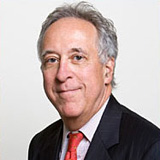 In 2009, USC football coach Pete Carroll earned the distinction of being the highest-paid employee at a private college in America. He only beat out professor David Silvers by 2%. For being a resident dermatology teacher at Columbia, Silvers was blessed with an astronomical $4.33 million. Presidents that pay such exorbitant fees to individual profs are quick to remind us that doctors often make more than professors in private practice and that such salaries are necessary to secure the best instructors. Still, its $4 million! For pimple-popping!
In 2009, USC football coach Pete Carroll earned the distinction of being the highest-paid employee at a private college in America. He only beat out professor David Silvers by 2%. For being a resident dermatology teacher at Columbia, Silvers was blessed with an astronomical $4.33 million. Presidents that pay such exorbitant fees to individual profs are quick to remind us that doctors often make more than professors in private practice and that such salaries are necessary to secure the best instructors. Still, its $4 million! For pimple-popping! -
Dean Takahashi, Yale University
 In 2010, Yale’s leadership announced that the president, vice presidents, and deans would be receiving no pay raises. Staff members’ salaries would be increased a max of $1,500, no matter their salary level. The move was an inevitable part of budget cuts at the school. But before you pat them heartily on the back, consider that the president was already making more than a million dollars and six other officers were making an average of $432,000 in 2008. Economics lecturer and senior director of investments Dean Takahashi is probably not concerned with a $1,500 pay raise, considering it represents .057% of the $2.6 million he was already making.
In 2010, Yale’s leadership announced that the president, vice presidents, and deans would be receiving no pay raises. Staff members’ salaries would be increased a max of $1,500, no matter their salary level. The move was an inevitable part of budget cuts at the school. But before you pat them heartily on the back, consider that the president was already making more than a million dollars and six other officers were making an average of $432,000 in 2008. Economics lecturer and senior director of investments Dean Takahashi is probably not concerned with a $1,500 pay raise, considering it represents .057% of the $2.6 million he was already making. -
Khalil M. Tabsh, UCLA
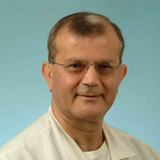 Dr. Khalil Tabsh is doing his part to keep the State of California from going totally bankrupt. According to the University of California, for a three-year period anyway (they don’t say which years), Dr. Tabsh’s full teaching salary was paid by professional fees. He did not receive any state funds those years. Still, in 2010 Dr. Tabsh pulled down $1.78 million, working in obstetrics and gynecology. Some of his clinical work is in geriatric gynecology. In that case, he earned every penny.
Dr. Khalil Tabsh is doing his part to keep the State of California from going totally bankrupt. According to the University of California, for a three-year period anyway (they don’t say which years), Dr. Tabsh’s full teaching salary was paid by professional fees. He did not receive any state funds those years. Still, in 2010 Dr. Tabsh pulled down $1.78 million, working in obstetrics and gynecology. Some of his clinical work is in geriatric gynecology. In that case, he earned every penny. -
Dan J. Laughhunn, Duke University
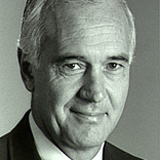 You can’t spell “Laughhunn” without “laugh,” as in, what he does all the way to the bank. In 2009, Duke’s trustee chairman claimed Duke was in “dire financial straits” after net assets fell 30% that year. However, a year later financial reports were brought to light proving that despite the tough times, higher-ups at the school had made out like bandits. As professor emeritus at Duke’s Fuqua School of Business, Laughhunn had been paid $1,031,673 by Duke Corporate Education, a not-for-profit “support corporation” for Duke. The million bucks was believed to be on top of Laughhunn’s teaching salary.
You can’t spell “Laughhunn” without “laugh,” as in, what he does all the way to the bank. In 2009, Duke’s trustee chairman claimed Duke was in “dire financial straits” after net assets fell 30% that year. However, a year later financial reports were brought to light proving that despite the tough times, higher-ups at the school had made out like bandits. As professor emeritus at Duke’s Fuqua School of Business, Laughhunn had been paid $1,031,673 by Duke Corporate Education, a not-for-profit “support corporation” for Duke. The million bucks was believed to be on top of Laughhunn’s teaching salary. -
William E. Fruhan, Harvard
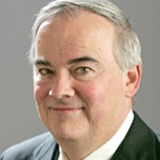 It took all the tuition of 35 Harvard students to pay professor William Fruhan’s salary in 2008-2009. With a student population of 19,200 that year, that seems like a steal. Except, at a yearly tuition price tag of $33,000, this means Fruhan raked in $1.19 million, making him one of the highest-paid employees at Harvard. As much as $720,000 of the amount came in the form of retirement incentives. The school is shelling out for Fruhan’s years of business experience as the director of 15 different corporations.
It took all the tuition of 35 Harvard students to pay professor William Fruhan’s salary in 2008-2009. With a student population of 19,200 that year, that seems like a steal. Except, at a yearly tuition price tag of $33,000, this means Fruhan raked in $1.19 million, making him one of the highest-paid employees at Harvard. As much as $720,000 of the amount came in the form of retirement incentives. The school is shelling out for Fruhan’s years of business experience as the director of 15 different corporations. -
Mark D. Rosenbaum, University of Michigan
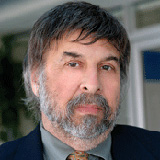 Wouldn’t it be awkward to be the president or dean of a college and not even be the highest-paid employee? At UM, President Mary Sue Coleman’s $570,000 annual salary doesn’t even put her in the top 10. Law profs Karl E. Lutz and Alison E. Hirschel each bring in around $750,000, but their colleague Mark Rosenbaum trumps them both. In 2010, the school paid the 15-year veteran prof and current director of the ACLU in Los Angeles $805,092.
Wouldn’t it be awkward to be the president or dean of a college and not even be the highest-paid employee? At UM, President Mary Sue Coleman’s $570,000 annual salary doesn’t even put her in the top 10. Law profs Karl E. Lutz and Alison E. Hirschel each bring in around $750,000, but their colleague Mark Rosenbaum trumps them both. In 2010, the school paid the 15-year veteran prof and current director of the ACLU in Los Angeles $805,092. -
William Friedman, University of Florida
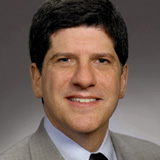 Florida governor Rick Scott recently made waves by making public the salaries of employees at Florida’s 11 public universities. As you can imagine, it wasn’t the janitors who were perturbed. No doubt the faces of doctors David Smith and Kevin Behrns were red to have their $600,000+ salaries publicized. At least they could say they weren’t the highest-paid profs at UF. That honor belongs to neurosurgeon Dr. William Friedman, who earned an $808,000 salary in 2010.
Florida governor Rick Scott recently made waves by making public the salaries of employees at Florida’s 11 public universities. As you can imagine, it wasn’t the janitors who were perturbed. No doubt the faces of doctors David Smith and Kevin Behrns were red to have their $600,000+ salaries publicized. At least they could say they weren’t the highest-paid profs at UF. That honor belongs to neurosurgeon Dr. William Friedman, who earned an $808,000 salary in 2010. -
J. Michael Davis, University of Michigan
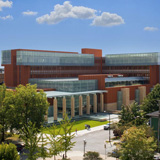 You have to go pretty far down the list of law profs at UM before you hit Mr. Davis’ pay grade, but he’s there at a handsome price of $672,000. Not bad considering the typical business prof makes just over $100,000. Davis teaches entrepreneurial studies at the Ross School of Business. And he is not to be confused with this James Michael Davis.
You have to go pretty far down the list of law profs at UM before you hit Mr. Davis’ pay grade, but he’s there at a handsome price of $672,000. Not bad considering the typical business prof makes just over $100,000. Davis teaches entrepreneurial studies at the Ross School of Business. And he is not to be confused with this James Michael Davis. -
Andrew M. Isaacs, UC Berkeley
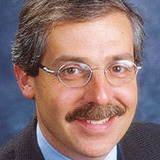 If you’ve been wondering where to find the 1%, look no further than a UC school. As The Daily Californian points out, 24 Berkeley employees technically qualified for the top 1% tax bracket according to the IRS, based on their 2010-2011 earnings. Leading the pack was adjunct professor of business and engineering Andrew Isaacs, who scored $709,000 in pay, edging out marketing prof Teck Hua Ho’s $613,000 take-home. Isaacs directs Berkeley’s energy innovation research and teaches five graduate-level courses.
If you’ve been wondering where to find the 1%, look no further than a UC school. As The Daily Californian points out, 24 Berkeley employees technically qualified for the top 1% tax bracket according to the IRS, based on their 2010-2011 earnings. Leading the pack was adjunct professor of business and engineering Andrew Isaacs, who scored $709,000 in pay, edging out marketing prof Teck Hua Ho’s $613,000 take-home. Isaacs directs Berkeley’s energy innovation research and teaches five graduate-level courses. -
Steven Weinberg, University of Texas
 Football is king in the South, and coaches’ salaries definitely reflect that. But a few intellectuals command decent money, like physics prof Steven Weinberg. For his services Weinberg receives $531,000 from UT. He certainly seems to be working for his money; he’s published more than 300 scholarly articles and written 10 books. And he’s a legend in theoretical physics: he’s been in the game since getting his Ph.D. in 1957, and he won the Nobel Prize in Physics in 1979.
Football is king in the South, and coaches’ salaries definitely reflect that. But a few intellectuals command decent money, like physics prof Steven Weinberg. For his services Weinberg receives $531,000 from UT. He certainly seems to be working for his money; he’s published more than 300 scholarly articles and written 10 books. And he’s a legend in theoretical physics: he’s been in the game since getting his Ph.D. in 1957, and he won the Nobel Prize in Physics in 1979.
No comments:
Post a Comment